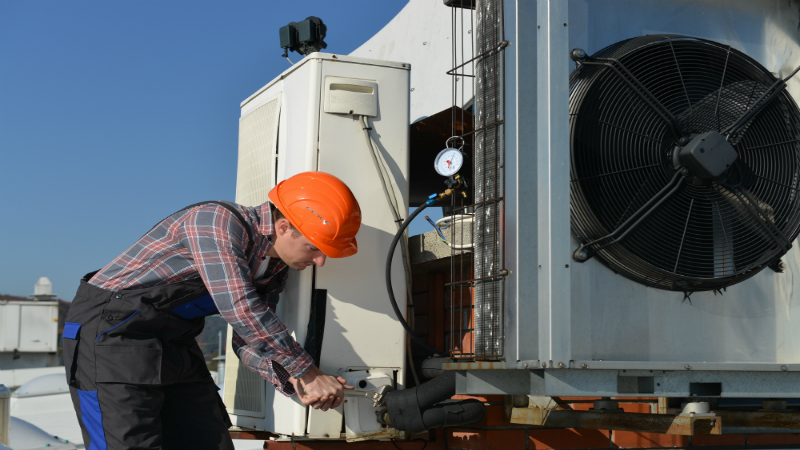Many of us use ceiling fans to help cool our homes during the summer. Most ceiling fans use about the same amount of electricity as a common 100-watt light bulb, so they are a low-cost yet effective way to supplement an existing air conditioning system. However, you can also use ceiling fans in the winter to help increase the effectiveness of your home’s heating system.
Ceiling Fan Direction in Summer – Foward / Counter Clockwise
In the summer, cool air collects near the floor, while hot air rises to the ceiling. The blades of a ceiling fan push air down, which forces the cool air near the floor to move outward and stir the air at the edges of the room. This circulation and movement of air can help a room feel up to four degrees cooler. You get a more comfortable temperature inside your home because a fan will help balance the cooling in each room where one is in use. If you have central air conditioning in your home, using a ceiling fan lets you set the thermostat several degrees higher without sacrificing comfort, meaning that you will save money on your energy bills while remaining comfortable.
Ceiling Fan Direction in Winter – Reverse / Clockwise
While a ceiling fan can help you stay cool in the summer, the same principles that apply to summer fan usage will also help you stay warm in the winter.
Most ceiling fans have a switch somewhere on the motor housing that allows you to change the direction of the turning blades. If you can’t locate the switch on your own, check your fan’s owner manual. This reverse mode pulls air up toward the ceiling, driving the warm air that has risen naturally back down and around the edges of the room. Just like in the summer, you will feel more consistent temperatures.
It is important to remember that a ceiling fan is really only worth using when someone is in the room. When you leave a room, turn off the fan to conserve even more energy.
More even single-room heating isn’t the only benefit of using a ceiling fan during the winter. If you live in a two-storey house with an open stairway, you have probably experienced the frustration of unbalanced heating zones inside your house. Upstairs rooms are unbearably hot, while downstairs rooms remain freezing cold. This forces your furnace to work overtime trying to maintain a consistent temperature – and can end up costing you a fortune in winter energy bills. Mounting a ceiling fan at the top of an open staircase helps move air more evenly through the entire house and will save you significantly on utility costs.
Heated Ceiling Fans
Another option is a heated ceiling fan. These devices have a built-in heating element that can be operated by remote control. Because a heated ceiling fan is totally ductless, there is no pricey installation involved. Heated ceiling fans can also be used in the summer time; the heating element simply switches off, and the fan works just like a typical ceiling fan. You can find a variety of heated ceiling fans at your local home improvement or hardware store.
We hope this information helps in adding comfort to your home year round.
Horizon Services is here to help. We perform a FREE carbon monoxide check with every heating repair service.
